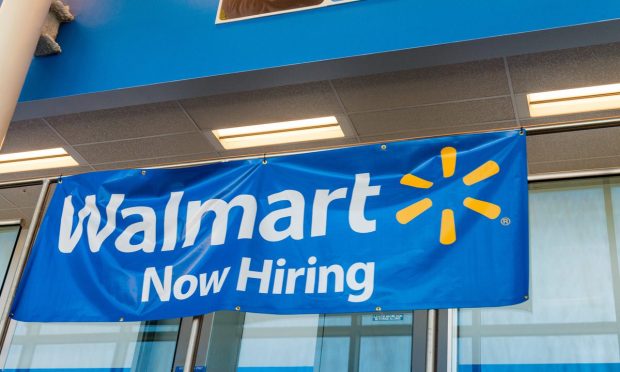AMZN vs WMT Weekly: Retailers Look to Fill Thousands of Jobs and Walmart Heads to NYC

Just days after Walmart opened its new white-label, last-mile delivery service to other retailers across the U.S., the box store giant said this week that it plans to add 20,000 employees to its distribution centers, fulfillment centers and transportation offices. Available jobs include order fillers, freight handlers, lift drivers, technicians and management positions.
See more: Walmart to Add 20K Supply Chain Workers
Logistics and supply chain headaches have plagued retailers since nearly the beginning of the COVID-19 pandemic, with few signs of an end in sight. According to VesselsValue, there are over 375 container ships currently waiting off ports around the world; Raj Patel, senior director of 3PL industry strategy at Blue Yonder, told PYMNTS last month that he expects the next 18 to 24 months to continue to be a struggle for retailers.
Amazon is also in the midst of its own hiring push for more than 40,000 corporate and tech roles across the U.S. in addition to “tens of thousands” of hourly positions in Amazon’s Operations network. This is the first hiring surge under new CEO Andy Jassy, who took over for founder Jeff Bezos at the beginning of July.
Walmart and Amazon are the top two private employers in the U.S. at 2.3 million and 1.3 million workers, respectively.
Bringing on BNPL
In the latest high-profile buy now, pay later (BNPL) announcement, Amazon and Affirm have inked a deal to test the payment option, giving consumers the ability to split purchase payments of $50 or more into equal installments without late fees or hidden charges.
The Affirm payment option is only being rolled out to select customers initially, but Amazon’s long-range plan is to extend the benefit to more customers in the month ahead. Walmart made its own pact with Affirm in 2019, giving shoppers at 4,000 locations and online the option of using BNPL to complete their purchases.
Read: Amazon Moves Into BNPL Space With Affirm Partnership
Having both retail titans in its portfolio is a huge win for Affirm — Amazon and Walmart together make up nearly 20% of consumers’ overall retail spend — and a further sign that banks will need to innovate to compete or get left in the dust. For Amazon and Walmart, sharing the same BNPL provider just adds another level of competition as they jockey for consumers’ wallets.
Delivering to the Big Apple
Walmart this week grew its delivery pilot with Instacart to include parts of New York City a year after successful pilots in Los Angeles, San Francisco, San Diego and Tulsa, Oklahoma. First reported by The Wall Street Journal, the partnership brings Walmart’s presence to Brooklyn, Queens and the Bronx — though notably not the approximately 1.7 million people who live in Manhattan.
Related: Instacart-Walmart Delivery Pact Heats Up Online Grocery Wars
Walmart has no physical presence in the Big Apple, instead using stores near the city to fulfill delivery orders for groceries, home goods and electronics through Instacart. The move puts pressure on Target — which does have a presence in New York and offers delivery through its subsidiary Shipt — and tries to keep Walmart neck-and-neck with Amazon.
Walmart also has partnerships with DoorDash and other delivery services as it continues to try and build out its nearly year-old Walmart+ service seen by many as crucial in its fight to match Amazon. The problem, however, is that many retailers are vying for the same providers as they rush to meet consumers’ demand for speed, and Walmart’s weight only goes so far when finding and retaining reliable drivers is proving to be difficult, especially since they’re typically contracted workers who receive few benefits.
Walmart previously offered grocery delivery in New York City through Jet.com until it shut down the service in 2019. The retailer also formerly offered a concierge shopping service in New York City called Jetblack, though that was shuttered in early 2020.
See: Walmart Shuttering Text-Driven Shopping Service Jetblack
Limits for Logistics
Ahead of the holiday shopping season, Amazon is reportedly tightening its inventory limits for third-party sellers even after the eCommerce giant has spent the last several months expanding the capacity of its logistics network.
This is the second year in a row that Amazon has instituted tighter quantity limits for sellers that use Fulfillment By Amazon. Last year, the limits caused some sellers to raise concerns that they wouldn’t be able to meet demand, especially for the hottest items.
See: Merchants Worry That Amazon Stocking Restrictions Will Chill Holiday Sales
Although the limits apply to all product categories, they vary on a per-item basis. Modern Retail reported earlier this week that oversize products seem to be getting restricted more than smaller products, perhaps because they take up more warehouse space. But “oversize” is a relative term; for example, according to Amazon, a yoga mat is oversize.
On a conference call with analysts in July, Amazon CFO Brian Olsavsky noted that “throttling of space for third-party sellers is not something we’d like to do … and that’s why we’re building out our network.”
“It’s hard to do quickly, but we’re moving as quickly as possible,” Olsavsky said. Over the last 18 months, Amazon has doubled the size of its fulfillment network, but the CFO added that the company is “not back to where we want to be on a number of dimensions.”
“We’ve been playing catch-up pretty much since the pandemic started,” Olsavsky said.
